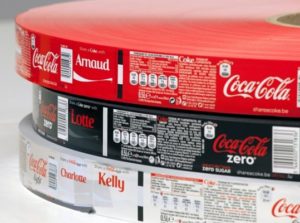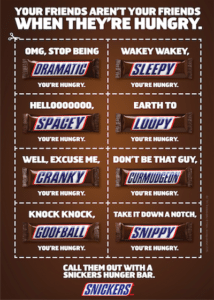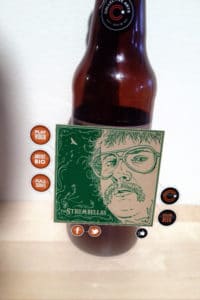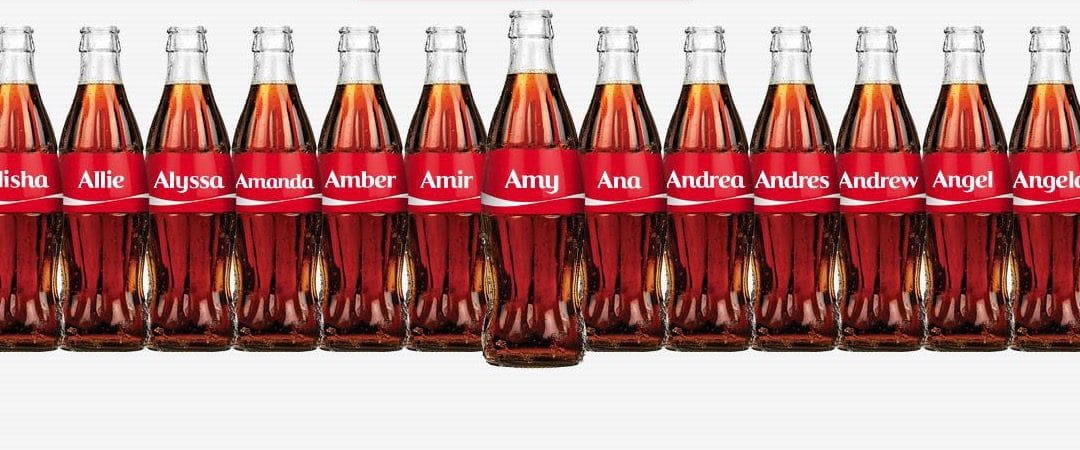[vc_row][vc_column][vc_column_text]Companies of all shapes and sizes are using variable content in their marketing. For the uninitiated, variable content is a digital printing process that, in a single print run, inserts combinations of names, images and other information. The main benefit is creating something that has more meaning to a buyer.
 “Share a Coke” is very likely the most successful variable content campaign ever run. In case you missed it (though we’re not sure how that would be possible) Coke took the most popular first names from local population data and printed them, one per bottle, under the words “Share a Coke with”. Consumers loved seeing their names on the bottles to the point that even non-Coke drinkers purchased them.
“Share a Coke” is very likely the most successful variable content campaign ever run. In case you missed it (though we’re not sure how that would be possible) Coke took the most popular first names from local population data and printed them, one per bottle, under the words “Share a Coke with”. Consumers loved seeing their names on the bottles to the point that even non-Coke drinkers purchased them.
While campaigns like Coke’s are relatively new, variable content has been used by direct mail marketers for years to great  effect (if you know a direct marketer, ask them about it–they are masters at testing response.) Despite this, it is the splashy recent applications–and their impressive results–that have made most companies wonder “How can we benefit from using this printing technique?” Personalized coupons, event tickets and promotional items have all seen positive consumer response. And, of course, it is working well in food and beverage; this fall, Snickers wrapped its bars with labels that had hunger-related emotions such as Snippy and Sleepy in place of the name. Playing on its recent marketing concept that “Snickers satisfies”, the campaign encouraged people to buy the bars for their friends.
effect (if you know a direct marketer, ask them about it–they are masters at testing response.) Despite this, it is the splashy recent applications–and their impressive results–that have made most companies wonder “How can we benefit from using this printing technique?” Personalized coupons, event tickets and promotional items have all seen positive consumer response. And, of course, it is working well in food and beverage; this fall, Snickers wrapped its bars with labels that had hunger-related emotions such as Snippy and Sleepy in place of the name. Playing on its recent marketing concept that “Snickers satisfies”, the campaign encouraged people to buy the bars for their friends.
Like other wildly successful variable content campaigns of late, Coke and Snickers used other marketing tactics alongside the new product labels. Snickers ran TV and print ads to boost awareness while Coke encouraged engagement through a microsite where people could “name” a bottle and either share it virtually or purchase it, a traveling kiosk that popped up in theme parks and events, and social media tactics.
While Snickers hasn’t yet reported results, Coke’s campaign has been an enormous success. Originally launched in Australia in 2011, “Share a Coke” has run in over 80 countries, proving the resonance of variable content has no borders. Thanks to the campaign, Coke has turned around a decade-long steady decline in its soft drink sales (its competitors are still in decline mode), according to the WSJ. Companies looking to infuse variable content into their own marketing should learn from campaigns like these because they are run by some of the best marketers on the planet.
What’s the future for variable content?
No one can say for sure, but we expect that the use of variable content will mature as we learn from and imitate pace setting companies like Coke. Market trials and A/B testing will continue to play an important role in increasing ROI. And new technology will create opportunities for companies to stimulate consumer engagement. For example, the recent resurgence of  QR codes, thanks to widespread use of smart phone apps, is connecting consumers with brands on the spot by popping open a webpage or video when they scan the code. We are even starting to see this expanding to augmented reality through the use of technology to overlay digital information on a label so it can be viewed through a device. You simply scan the label and the brand comes to life on your smart phone, engaging the buyer in a new, fresh way.
QR codes, thanks to widespread use of smart phone apps, is connecting consumers with brands on the spot by popping open a webpage or video when they scan the code. We are even starting to see this expanding to augmented reality through the use of technology to overlay digital information on a label so it can be viewed through a device. You simply scan the label and the brand comes to life on your smart phone, engaging the buyer in a new, fresh way.
What is for certain is this isn’t a fad or fleeting technology. It is here to stay, so if you haven’t incorporated it into your marketing yet, it’s time.[/vc_column_text][/vc_column][/vc_row]
